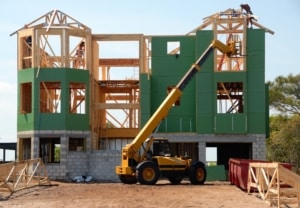Last week it was reported by Edie news that HEI’s (higher education institutions) and colleges in England, have fallen well behind their collective 2020 Carbon emissions targets. The required target is a reduction in carbon emissions of 43% (from the 2005 figures.) Yet, research produced by the sustainability consultancy, Brite Green reports that the sector had, by the end of 2013/14, achieved a reduction of just 7% in absolute terms – well short of where it needs to be.
So, what has been going on to limit this progress?
Universities have grown and developed over the last few years which is putting additional pressure on Carbon performance. The increase in tuition fees has also had the effect of ‘commercialising’ the sector and forcing institutions to become more competitive to attract students. As a result, the estate size in HEI England has increased by 3% (total Gross Internal Floor Area since 2009/10). This is having an impact on absolute carbon reductions which used the 2005/06 estate as the baseline. So whilst there are many good success stories with Universities putting into place large scale programmes of work, the impact of this is being restricted by changes to the University estate.
From our experience of working extensively within the sector, we have identified a number of key areas beyond organisational growth common to many (not all!):
- Hitting the target is seen as the responsibility of the sustainability manager or energy manager. It’s not! Everyone should have a stake in making the organisation more efficient, prosperous, and sustainable in its widest sense.
- No penalties are associated with missing the target. This also applies in sectors such as health and local government. This means that mobilising the organisation becomes increasingly difficult and in some cases creates a ‘why should I care’ culture.
- The time to develop and, more accurately, implement energy saving schemes is often long and drawn-out.
- Delays in approval for financing – although funding is often available, internally or from external funds.
- Opportunities to instigate repeatable schemes based on prior successes are often missed.
We have found that addressing these barriers makes a considerable difference to accelerating progress in reducing Carbon emissions and introducing workplace efficiencies.
This includes:
- Delegating energy budgets – making it count for those that can make a difference.
- Mobilising the organisation through a well thought out programme of behavioural change management.
- Turnkey management of savings initiatives from conception, business case development, project management and verification.
- Piloting schemes in quick action areas, developing a lessons learnt approach and instigating a broad and cost effective rollout programme.
By using a combined strategic, technical and people-centered approach the gap can be closed between current performance and the 2020 targets. This gives us good reason to be optimistic for the prospects of the sector.
To discuss your own strategy for reducing Carbon emissions, or if you would like more information please contact Matt Whitehead, LCMB’s head of Carbon and Energy Reduction.







